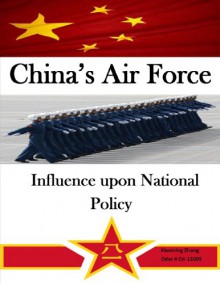The growth of China's airpower in recent years has naturally raised great Western interest in comprehending the People’s Liberation Army (PLA) Air Force’s (PLAAF’s) influence within the PLA, its relationship with other services, and the role it currently plays in national policymaking. Change is...
show more
The growth of China's airpower in recent years has naturally raised great Western interest in comprehending the People’s Liberation Army (PLA) Air Force’s (PLAAF’s) influence within the PLA, its relationship with other services, and the role it currently plays in national policymaking. Change is clearly underway within the ranks of the PLAAF, which has embraced a new concept of operations that emphasizes development of an air force capable of both offensive and defensive operations, fielding an increasing number of fourth-generation multirole fighters, early warning and electronic warfare aircraft, and long-range surface-to-air missiles. The force structure is being radically reshaped to become a smaller, yet more technologically capable, service. For military organizations to be able to take dramatic changes, they must also have appropriate personnel policies, organizational structure, service culture, and leader development programs. What has not changed is the PLA’s political culture, service tradition, older ways of doing things, and outdated organizational system. All these form relentless constraints that will undoubtedly continue to hinder the PLAAF's modernization efforts. In sum, then, the PLA is a titanic bureaucratic amalgamation with a leaden hand of tradition that can often block innovation. Changes in doctrine, training practices, force structure, and equipment are underway, yet many traditions and cultural characteristics of the 83-year-old PLA are rigorously maintained. On top of that, there is the Party-controlled political culture and the ground force-centric predominant organizational tradition of the PLA. Both serve as constraining mechanisms that not only restrict the PLA's drive to autonomy, but also ensure its loyalty to the Party and obedience to Party policy. No military reformation can be expected to undermine the Party's control over the military (with the Central Military Commission on the top, assisted by four headquarters departments, though not organized in Western fashion as true joint command and control apparatuses). If new mission requirements and an emphasis on joint operations are forcing the PLAAF to rethink itself and its role, to reduce its force size, to acquire new aircraft and weapons systems, and to strengthen its command and control by the modernization of PLAAF’s information technology infrastructure, none of these changes has seriously posed challenges to the existing organizational system of the PLA. The political culture and the military system of the PLA continue to ensure the Chinese air force remains as it has been-consisting of aviation, surface-to-air missiles, antiaircraft artillery, radar, and airborne troops, while space assets and strategic missiles remain separate from it. Despite the PLAAF's vision of being capable of both offensive and defensive operations, the PLI’s current campaign theory defines the Second Artillery force as a preemptive strike force and projects the PLAAF to carry out offensive operations at critical, necessary moments. Thus, although the PLAAF is in the midst of a dramatic transformation with new weapons systems and growing capabilities, its role and influence remain limited within the contemporary, army-dominated, Chinese military system. As in other nations previously, differing and conflicting service cultures contribute frictions between services, though, in China, that has not brought any fundamental change of relationship among the land-air-sea forces. The continued existence of political constraints on when and how airpower should be used further limits and frustrates any role the air force can play in national policymaking.
show less

